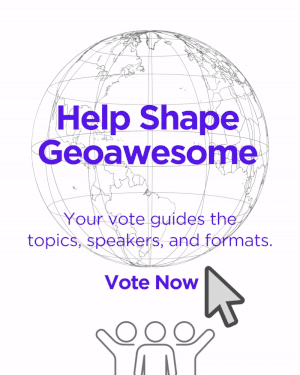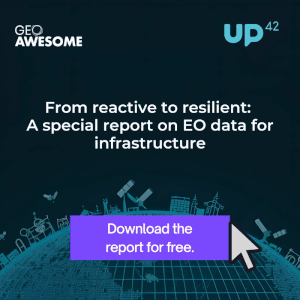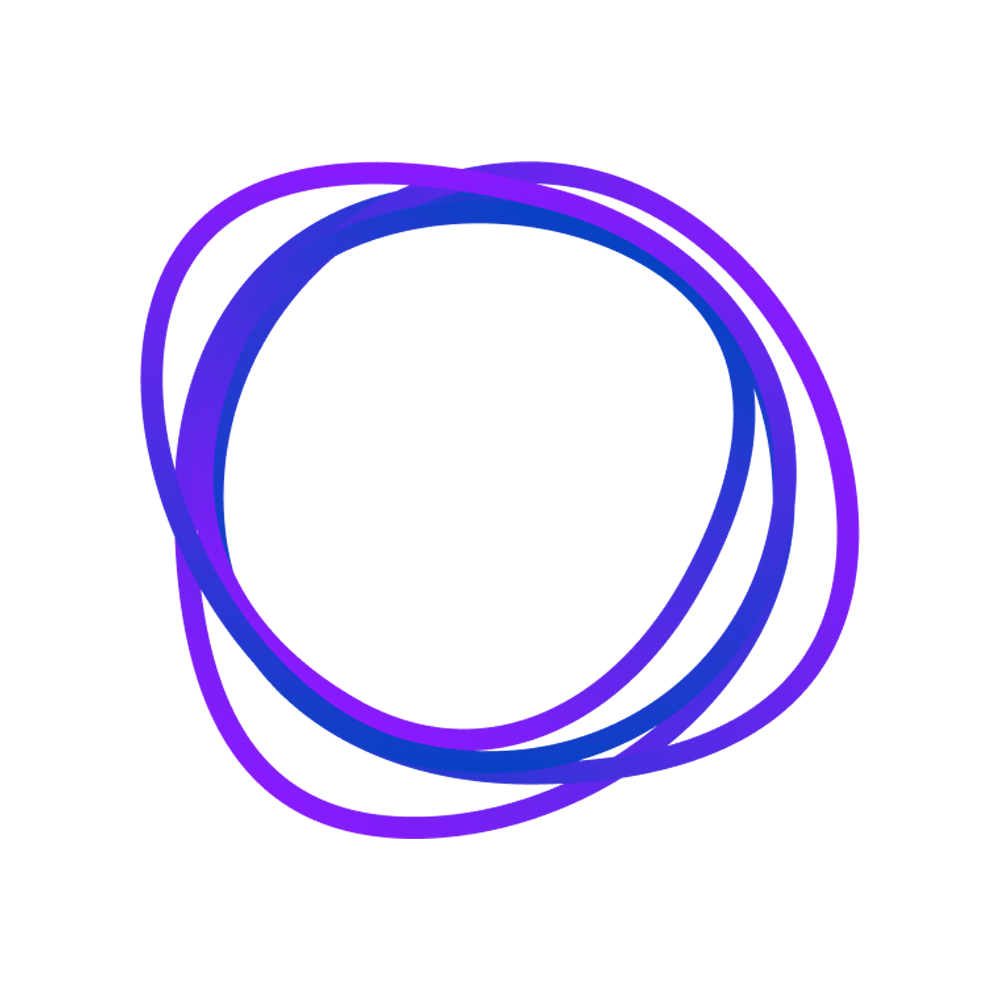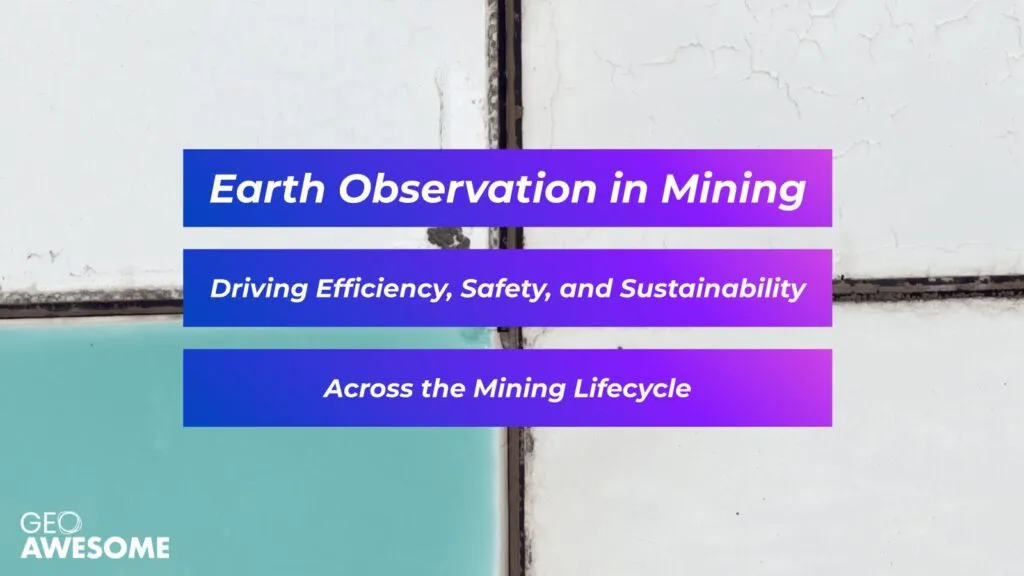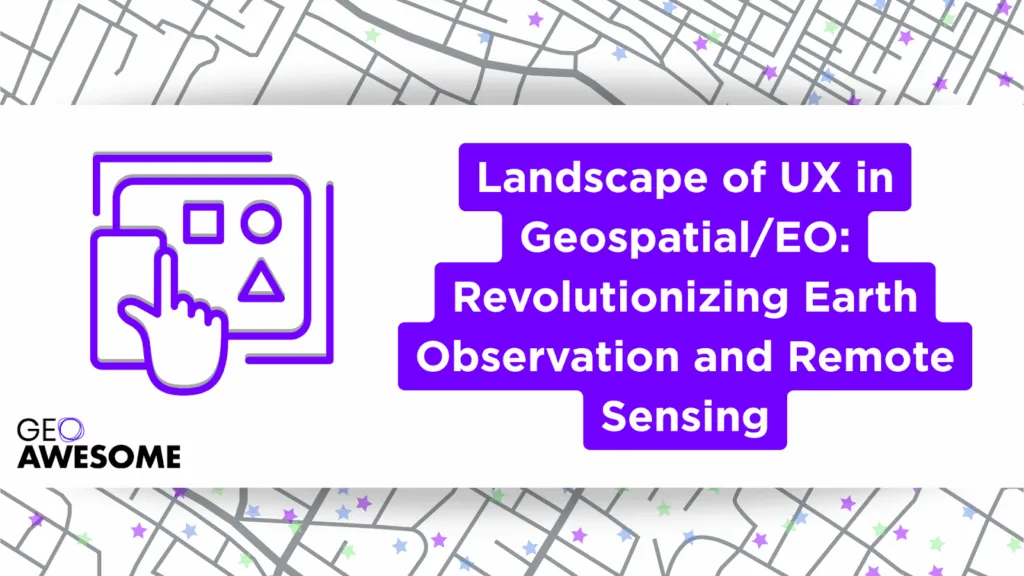
Landscape of UX in Geospatial/EO: Revolutionizing Earth Observation and Remote Sensing
In an era where data drives decision-making across industries, Earth observation and remote sensing have emerged as essential tools. Satellites orbiting the Earth and airborne sensors collect vast amounts of geospatial data – information that can reveal everything from weather patterns to urban sprawl. Yet, the true potential of this data is realized only when it is accessible, understandable, and actionable. This is where User Experience (UX) comes into play. UX design is not just about making digital products look attractive; it’s about ensuring that complex data becomes intuitive and usable, empowering a diverse range of users to make informed decisions.
What Is UX in Earth Observation and Remote Sensing?
UX encompasses every aspect of an end-user’s interaction with a company, its services, and its products. In the context of EO and remote sensing, UX involves designing systems, applications, and interfaces that allow users to interact seamlessly with geospatial data. This might include everything from interactive maps and dashboards to mobile applications and web platforms that display satellite imagery.
Several companies are pushing the boundaries of what UX in Earth observation can look like.
Element84 has developed powerful tools for managing and visualizing satellite data, including their work on Cumulus, a NASA-backed data pipeline system that enhances access to large-scale Earth data. Their Satsearch Explorer and contributions to the Harmony project demonstrate a focus on reducing complexity and making high-volume EO data usable through intuitive dashboards and APIs.
Development Seed leads in building open-source, modular geospatial platforms. Their contributions include the STAC Browser, an intuitive way to navigate cloud-based satellite catalogs, and the OpenEO API, which standardizes EO data processing across different platforms. Development Seed also played a key role in designing the NASA Earthdata Search UX experience and helped build Mapbox GL JS, making geospatial visualizations more dynamic and developer-friendly.
Sparkgeo focuses on creating accessible, purpose-driven geospatial tools. Their work on Terradactile, a tool for rendering and interacting with massive geospatial datasets in the browser, highlights their commitment to performance and usability. Sparkgeo also supports product development for platforms like SkyWatch and collaborates with non-profits to bring Earth observation insights to underserved communities through clean, thoughtful interfaces.
Together, these companies demonstrate how UX in EO is about much more than aesthetics – it’s about building bridges between complex spatial data and real-world decision-making.
The Challenge of Complexity
EO data is inherently complex. Satellite images, sensor readings, and spatial datasets can be overwhelming if presented without careful consideration for user interaction. UX design bridges the gap between raw data and the end-user by organizing, visualizing, and contextualizing information in a way that is both engaging and easy to understand.
The Human Element
At its core, UX is about empathy in design – understanding the needs, limitations, and contexts of users. Whether it’s a researcher analyzing climate change, a city planner evaluating urban growth, or a policymaker tracking environmental hazards, each user group has unique requirements. By prioritizing user-centric design, EO and remote sensing platforms can cater to these diverse needs, ensuring that every stakeholder can extract meaningful insights from the data.
Real-World Examples: Bridging Data and People
One practical example of integrating UX in geospatial technology is the multi-user walkability route planner featured by Transform Transport. This interactive tool is designed to enhance urban mobility by combining geospatial data with user-friendly interfaces. The planner not only maps out the most efficient pedestrian routes but also considers variables such as accessibility and safety.
Inclusive Mobility and Beyond
Other examples where UX design meets EO include:
- Disaster Response Dashboards – such as those created by Esri’s Disaster Response Program, which provide real-time wildfire maps, emergency alerts, and satellite imagery overlays.
- NASA Worldview – a web-based tool offering intuitive access to global satellite imagery for air quality, sea surface temperature, and natural hazards.
- UNEP’s Global Environmental Monitoring System – delivering interactive visuals and insights on environmental health.
Designing an Interactive Feature for EO and Remote Sensing
Imagine a web-based interactive feature dedicated to showcasing the potential of UX in EO and remote sensing. This feature would serve as both a demonstration and an educational tool, highlighting various applications and allowing users to interact with geospatial data in meaningful ways.
The Importance of Geospatial Technology
Geospatial technology is the foundation of UX in Earth observation and remote sensing, enabling spatial context for decision-making and turning complex datasets into clear, interactive tools. Thoughtful UX design plays a critical role in how effectively users — from scientists to policymakers to the public — engage with geospatial data.
Why It Matters
Real-time Interactivity
Dynamic map interfaces, time sliders, and dashboards allow users to track evolving phenomena like wildfire spread, deforestation, or flood alerts. Tools such as Google Earth Engine and Blue Raster’s ArcGIS apps use UX principles to create intuitive workflows and responsive interactions that reduce friction in analysis.
Predictive Modeling, Made Visual
Visual design brings forecast models to life — whether it’s monitoring crop health, sea level rise, or urban heat zones. Apps like NASA Worldview and Element 84’s data visualization platforms translate satellite data into interactive predictions that are understandable even without technical expertise.
Democratization of Data
Geospatial UX lowers the barrier to entry. Through user-friendly interfaces, people without GIS training can explore satellite insights — from tracking air quality to monitoring land use change. For example, Ordnance Survey emphasizes accessibility in designing public-facing geospatial tools, ensuring equitable data access.
Case in Point
- Google Maps uses geospatial UX to help users visualize route options, traffic patterns, and nearby services through simple, responsive maps — a model example of intuitive spatial design.
- Autentika highlights that in GIS platforms, the map itself is the interface, and optimizing that interaction space is key to a great UX. (Source)
The Future of UX in Geospatial Tech
UX in EO and remote sensing is moving toward greater:
- Natural language interaction with data (e.g., chat-style queries).
- Multi-sensor integration displayed through a unified interface.
- Intelligent alerts and decision-support dashboards (e.g., climate impact thresholds, fire warnings).
As noted by NASA’s Earth Science Data Systems, better-designed interfaces will enable faster insights, more confident decision-making, and wider accessibility.
UX design is no longer optional in EO and remote sensing – it’s essential. By transforming complex geospatial data into intuitive tools, UX empowers action across fields from disaster response to environmental justice. Through accessible interfaces, personalized views, and engaging simulations, we can make EO data not just available, but truly usable.
The time is ripe to build an interactive feature that exemplifies how great UX in geospatial platforms can bridge the gap between data and impact. It’s more than a design challenge—it’s a step toward a more informed, connected, and resilient planet.
Did you like the article? Read more and subscribe to our monthly newsletter!
